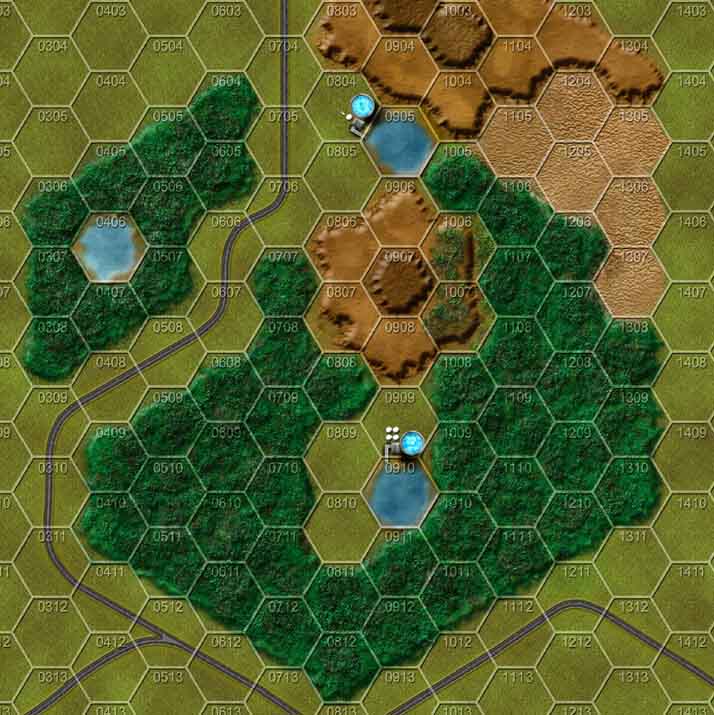
| Subtopic | Posts | Updated |
| By Steve Cole (Stevecole) on Thursday, March 14, 2013 - 01:27 pm: Edit |
Hornet's Nest
This large forest faces the largest open field on either Marines map.
| By Steve Cole (Stevecole) on Thursday, March 14, 2013 - 01:28 pm: Edit |
Oh, yeah, the map

| By Steve Cole (Stevecole) on Thursday, March 21, 2013 - 11:50 am: Edit |
Another map
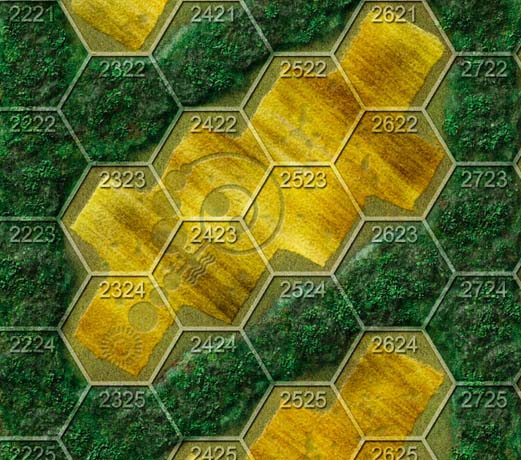
| By Steve Cole (Stevecole) on Friday, March 22, 2013 - 01:10 pm: Edit |
Zasu Mining Corporation open-pit mine
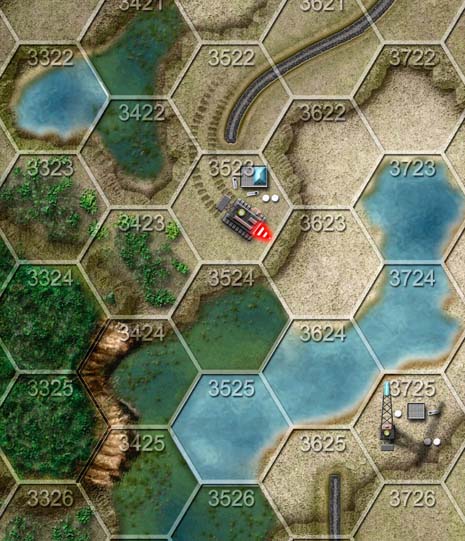
| By Steve Cole (Stevecole) on Friday, March 08, 2013 - 12:13 pm: Edit |
Mount Xander
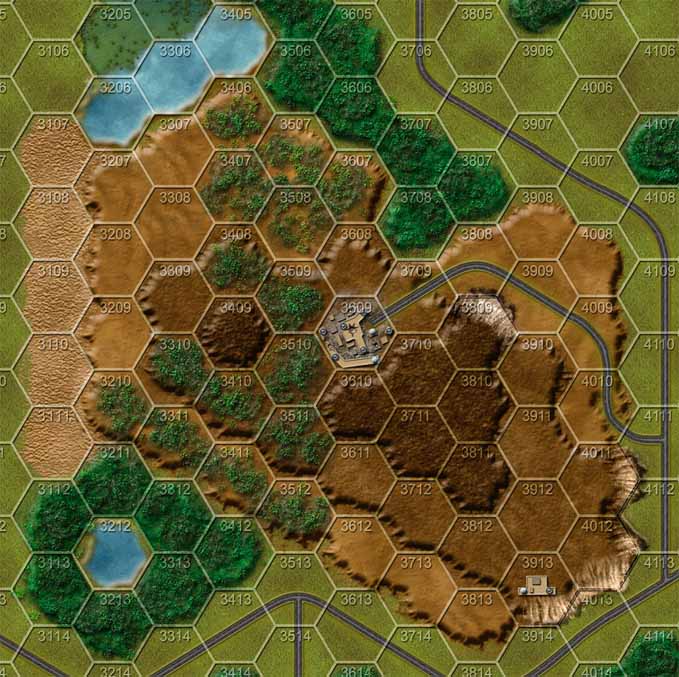
| By Steve Cole (Stevecole) on Tuesday, March 12, 2013 - 04:57 pm: Edit |
The Boccage
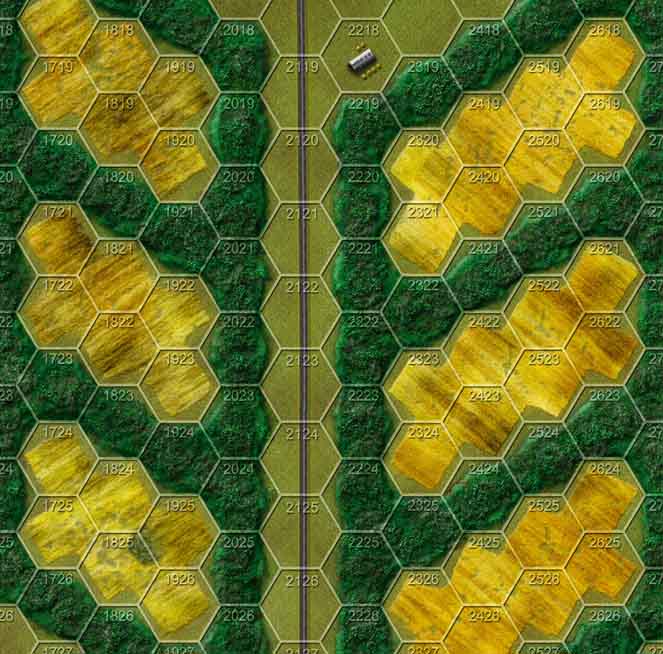
| By Steve Cole (Stevecole) on Wednesday, March 13, 2013 - 12:56 pm: Edit |
Elizabethtown
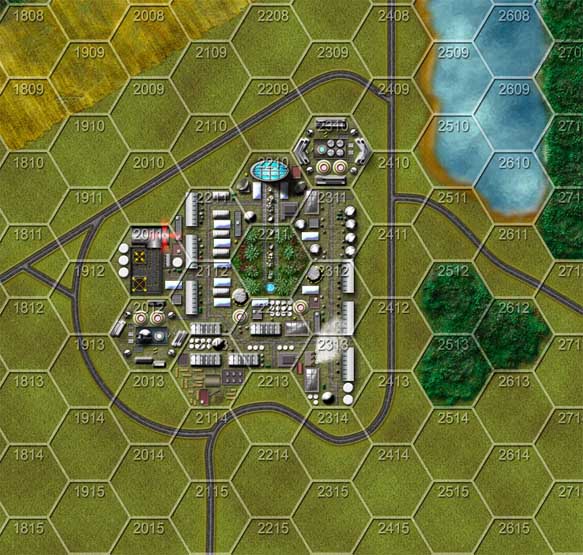
| By Steve Cole (Stevecole) on Thursday, March 07, 2013 - 05:21 pm: Edit |
Cover
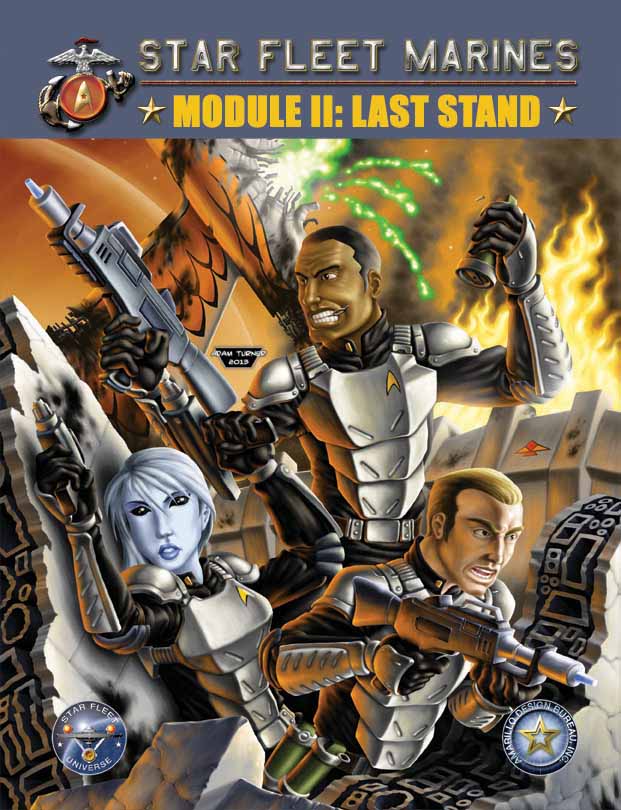
| By Steve Cole (Stevecole) on Thursday, March 07, 2013 - 10:30 am: Edit |
This might be a bit more dramatic...
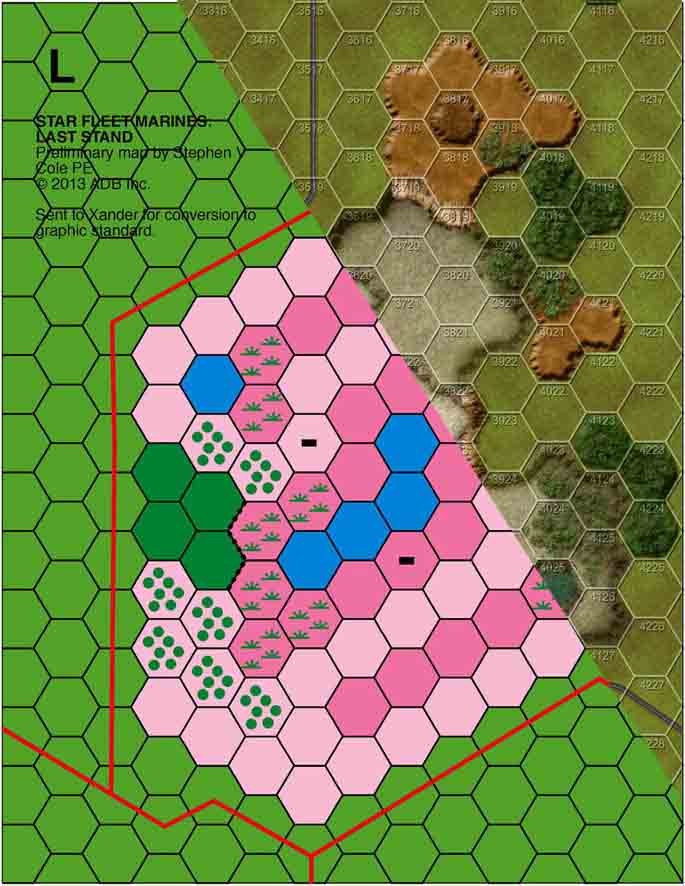
| By Steve Cole (Stevecole) on Wednesday, February 20, 2013 - 04:36 pm: Edit |
I assume people want to see this.
sfb_last_stand_map_4.pdf (317 k) |
| By Steve Cole (Stevecole) on Friday, March 29, 2013 - 11:57 am: Edit |
The corner of nowhere

This is the corner of the map you have not seen so far.
Xander was nice enough to send a "no hex" version of the map so you can admire his art. I created six "samples" and will upload one a day in a random order. Jean will upload the same samples on facebook in a different random order (since neither of us know what order the other will pick).
| By Steve Cole (Stevecole) on Saturday, March 30, 2013 - 03:51 pm: Edit |
Fields of fire
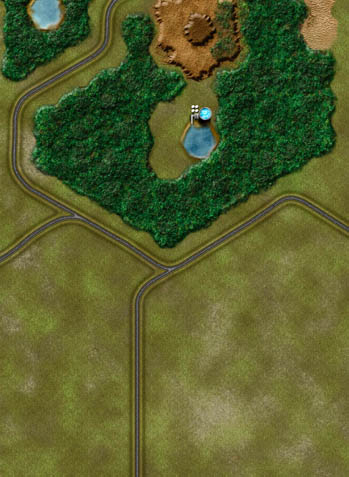
| By Steve Cole (Stevecole) on Monday, April 01, 2013 - 12:04 pm: Edit |
Elizabethtown
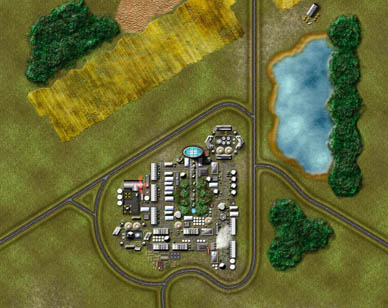
| By Steve Cole (Stevecole) on Monday, April 01, 2013 - 12:10 pm: Edit |
Xander Mountain
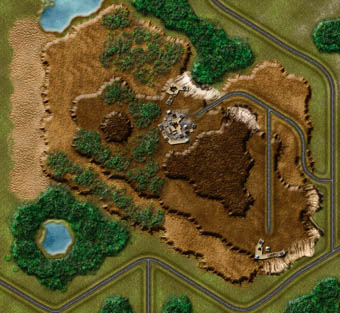
| By Steve Cole (Stevecole) on Tuesday, April 02, 2013 - 11:59 am: Edit |
Zasu Pitts
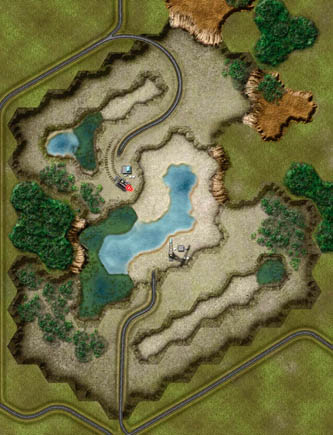
| By Steve Cole (Stevecole) on Wednesday, April 03, 2013 - 01:38 pm: Edit |
Hedgerows
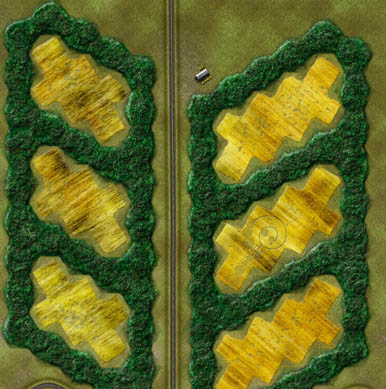
| By Steve Cole (Stevecole) on Thursday, April 04, 2013 - 01:26 pm: Edit |
Corner of Nowhere and Someplace.
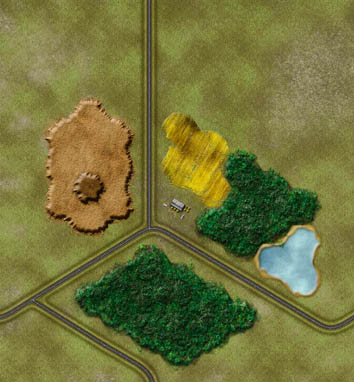
| By Steve Cole (Stevecole) on Wednesday, April 10, 2013 - 05:07 pm: Edit |
Link from outside.
| By Steve Cole (Stevecole) on Friday, April 12, 2013 - 03:10 pm: Edit |
Scenarios
(LS9) THE SIEGE OF NUCKLOW
The Romulans colonized the planet of Dionaea because of the worthwhile deposits of the key mineral topaline. Mines (with the surrounding towns) were walled forts because the local natives (aggressive, carnivorous trees) were furious about any Romulan infestation and continually tried to destroy it.
This battle describes the fate of a typical mining town. Use the central city. The outer hexsides of the town have ten-foot reinforced concrete walls, giving a +3 defense (instead of the normal +2 for a town hex) to any unit being attacked over an outer hexside.
Historical Reference: The Siege of Lucknow, which took place during the Sepoy Mutiny in British India in 1857. Indian troops rebelled against their British overlords, perhaps because of rumors that the new rifle cartridges were greased with hog fat, which many Indians considered a violation of their religions. (The soldier had to bite the cartridge to load it, tasting the flesh of a forbidden animal.)
(LS10) THE DRAGON’S DEN
A Romulan move into Gorn space left the Gorn colony planet of Shilokan behind Romulan lines. The Romulans landed troops on the planet to deal with the original Gorn garrison. An entire ground force legion was sent to deal with a weak brigade of Gorn troops. (The Romulans wanted the planet intact, so dropping nuclear weapons on the Gorn troops was not an option.) At the battle of Timbok Landing, the Gorn brigade was defeated in detail, with most of the front-line infantry killed or captured.
The Gorns retreated and made their last stand in a forested area that the Romulans later named Dragon’s Den. The Gorn forces included only a handful of surviving infantry, but the original brigade’s entire artillery train. The Romulans sent two previously unbloodied cohorts of the ground legion.
Historical Reference: During the Battle of Shiloh in the American Civil War, a surprise Confederate attack routed General Grant’s Union forces. Two Union divisions (under Generals Prentiss and Wallace) held out in a patch of woods later called the Hornet’s Nest. It took the Confederates over four hours to destroy this force, which gave Grant enough time to rally his troops for a final defense. (Grant won the battle by counter-attacking on the next day with fresh troops.) Jesse Cole, an ancestor of game designer Stephen V. Cole, was wounded fighting on the Union side of the battle. After 14 failed charges, the Confederate commander ordered staff officers to locate every available artillery battery and bring them to bear on the defenders. It is notable that Albert Sidney Johnston (reputed to be the best general in the Union or Confederacy) was killed in the battle, perhaps changing the outcome of the Civil War.
Our battle here varies from this, providing mostly artillery units for the defending Gorns.
(LS11) LINES OF DEFENSE
During the Klingon invasion, many Federation colony worlds were left behind as Star Fleet retreated. The Klingon fleet pushed on as fast as it could, leaving those colonies to be occupied by follow-on forces, including large numbers of ground troops carried in converted freighters. There were few starships to support these landings. The Klingons wanted to capture the infrastructure (mines, factories) of the colonies intact, and (for the most part) were able to intimidate the Federation colonies into surrender by threatening them with massive bombardments.
On a few colony worlds, ground troops from recently activated National Guard formations fought desperate actions against Klingon assault brigades, hoping to hold out for a few days until Star Fleet could counter-attack. On the colony world of Calvados, the Klingon objective was a large factory town protected by a domed shield, preventing their troops from simply transporting into the town square and capturing the place. The only way into the town was through an area of small fields bordered by earthen dikes planted with thick hedges.
Historical Reference: The infamous bocage or hedgerow country south of Normandy Beach (France, World War II) provided the defending Germans with excellent terrain wherein their shattered infantry divisions could hold back the invading American, British, and Canadian troops.
(LS12) LAST STAND ON FANG MOUNTAIN
The Coalition invasion of the Kzinti Hegemony quickly left over half of that empire under occupation, including countless colony worlds. On one of these, Khorantahn, a battalion of Kzinti troops waged a four-year-long guerrilla campaign. The Lyrans had few “regular” troops available for the campaign, but organized whatever personnel they had on the planet, and brought in reserve infantry units from the Lyran Empire itself.
While the Kzinti troops were of a much higher quality, the quantity of Lyran militia units had a quality all its own. It took years, but the Kzinti troops were finally chased out of important areas, hunted down, and surrounded on Fang Mountain.
Historical Reference: The US Marines of Fox Company of the 7th Marine Regiment held out for five days on Fox Hill in Korea during November of 1950. During this time, they were attacked by (and virtually destroyed) three entire battalions of the Chinese Army. (The Chinese troops were draftees who were not that interested in dying for the glory of communism.) While this battle is a very different strategic situation, it is a similar tactical situation. Some of the hill is covered by trees, but much of it is not. The Chinese/Lyran troops were much inferior (if totally fanatical).
| By Steve Cole (Stevecole) on Friday, April 12, 2013 - 03:11 pm: Edit |
(LS13) THE ZIEN-KIEN ROUTE
During the Coalition invasion, many Hydran worlds were left behind the front lines. The Klingons and Lyrans were unable to occupy gas giants (which most Hydran worlds were) and contented themselves with orbital bases, destruction of military facilities by bombardment, and demands for tribute (which the Hydrans paid rather than facing more bombardment).
But there were many oxy-nitrogen worlds in Hydran space, occupied by the Exile Races. Some of these were former Klingon Subject Races left behind after the First Hydran Reconquest in Y135, while others were occupied by species that escaped (or were expelled from) Klingon or Lyran space.
One of these worlds was Lietkam, occupied by a mixture of species who had escaped the tyranny of the Klingons and Lyrans. These colonists, happy under the benign (and economic-driven) rule of the Hydrans, had built up numerous industrial facilities. They found that the most efficient means to move things around the planet in large quantities (metal ore or refined ingots) was by land train. These large surface vehicles rolled on wheels but used anti-gravity boosters to reduce surface loading. Even so, the trains were so heavy (over a thousand tons each) that they required “hard-packed roads” which could tolerate the massive weight.
The Klingons, within whose conquered space the planet happened to be located, wanted the industrial facilities and mines, and demanded the Subject Race and Exile Race people assume their proper place as virtually destitute workers for the benefit of the Klingon Empire. Some of the colonists submitted, but many did not. Knowing that a Klingon invasion was only a matter of time, the colonists formed reserve military units and prepared key areas for defense. One of these areas was the route between the Zien mines and the Kien smelter facilities, a route over 200 kilometers long. The colonists selected the small town of Penk as the core of a defense area. Their plan was to construct a series of mutually supporting fortresses in this area, totally blocking the route between Zien and Kien. This made the Zien mines and the Kien smelters absolutely useless to the Klingon occupiers, who would need years to build new hard-packed roads around Penk (out of range of the weapons located there).
The defense of Penk and the nearby fortresses fell to the 8th Defense Battalion, which had spent not years, but decades, preparing for the Klingon arrival.
Historical Reference: The French fortress at Dien Bien Phu in Indochina was actually a collection of separate fortresses spread out over the floor of a valley. The French assumed that the Viet Mihn could not drag artillery over mountains into the area, which would make the fortress an invulnerable bastion from which they could launch patrols and raids to control a vast area.
The strategic situation in our scenario is very different, but the tactical situation is not that different. The French were subjected to weeks of artillery bombardment and siege before the final assaults began. The Klingons have no reason to besiege the Hydrans (who will only spend the time using their engineers to dig in) and need to attack.
| By Steve Cole (Stevecole) on Friday, April 12, 2013 - 03:12 pm: Edit |
(LS14) TANK BATTLE IN THE ZASU PITS
The Federation’s preparations for the Klingon invasion were haphazard at best, and were often done for less than realistic military reasons. A hundred thousand National Guard troops were called up and sent to a hundred colony planets across the western portions of the Federation, supposedly to make the planets more resistant to Klingon invasion but actually to pay off political supporters by moving troops onto the Federation payroll.
One such deployment was particularly curious, that being the 33rd Mixed Mechanized Battalion (from Rigel) that was sent to a front-line colony planet known as Llano Estacado. The theory was that the planet, being dryer than most, had more open territory where mechanized units could be more useful. The planetary governor assigned the battalion to protect the open pit mines operated by the Zasu Mining Corporation. These were a source of vanadium and iridium which the Federation Star Fleet needed and which the Klingons would surely want to capture.
The Klingons knew that the 33rd was camped near the valuable mines and decided to bring in their own mechanized units to capture the valuable resource.
Historical Reference: The last stand of the 5th Hampshire Battalion at Sidi Nsir in Tunisia in February 1943.
| By Steve Cole (Stevecole) on Friday, April 12, 2013 - 03:13 pm: Edit |
(LS15) THE SIEGE OF ROMULAN RIFT
In another battle on Dionaea, a Romulan infantry century (company) was conducting a reconnaissance mission when another of the frequent revolts by the natives broke out. Unable to reach any garrison area, the commander of the century, Centurion Romhead, decided to dig in on the only vaguely defendable terrain in sight and hope for the best.
The worst was not long in coming.
Map: Use the Last Stand map. Water features are ponds and streams, crops and forest are open grass. There are no towns or buildings in the area, so ignore any of those features on the map.
Romulan forces which leave the map are treated as having been destroyed by the Dionaeans.
Historical Reference: Similar battles include the Wagon Box Fight (US cavalry vs. Native Americans in 1867) and Rorke’s Drift (Welsh infantry vs Zulus in Natal in 1879.
| By Steve Cole (Stevecole) on Friday, April 12, 2013 - 03:14 pm: Edit |
(LS16) THE PHASERS OF ACRIMONE
Invading a defended colony planet, the fleet commander is concerned over a series of ground-based heavy phaser batteries. These can only be attacked at short range (50,000 kilometers is short for space combat) and at that range the heavy phasers of the ground bases will ventilate a starship before you can say “oops.”
The fleet commander decides to send in ground troops to destroy the bases, trading the lives of the Marines for the lives of his starship crewmen.
Historical Reference: No specific battle. This is, however, typical of battles fought in Federation Commander and in Star Fleet Battles.
| By Steve Cole (Stevecole) on Friday, April 12, 2013 - 03:14 pm: Edit |
(LS17) THE GATES OF HELL
On the remote colony planet of Mexigulpa, an open pit mine has accidentally breached a network of subterranean caverns inhabited by “pre-Cambrian” creatures. These are life forms so ancient that no living scientist had any idea they existed. The creatures have become aware of the colonists on the planet and move to destroy them.
Historical Reference: The movie series Tremors.
| By Steve Cole (Stevecole) on Friday, April 12, 2013 - 03:15 pm: Edit |
(LS18) ZOMBIE HORDE
For reasons no one understands, zombies tend to gather into “hordes” of a hundred or more and move as a pack toward some perceived food source. This is a solitaire scenario.
Historical Reference: The television series The Walking Dead.
| By Steve Cole (Stevecole) on Friday, April 12, 2013 - 03:16 pm: Edit |
(LS19) GETTING OUT OF DODGE CITY
On the colony world of Nebrakansas, human and Alpha-Centauran colonists had set up numerous farming communities. What they did not know was that every four years massive herds of wild cownoserrii migrated from southern pastures to northern calving grounds. These animals, each weighing two or three tons and with the intelligence of the average cow or hog, follow ancient migration routes regardless of anything that has changed, such as the construction of a town in the well-travelled area.
This is a solitaire scenario.
Historical Reference: The television series Gunsmoke.
| By Steve Cole (Stevecole) on Monday, November 18, 2013 - 02:38 pm: Edit |
Counters for a future Marines module

| Administrator's Control Panel -- Board Moderators Only Administer Page | Delete Conversation | Close Conversation | Move Conversation |